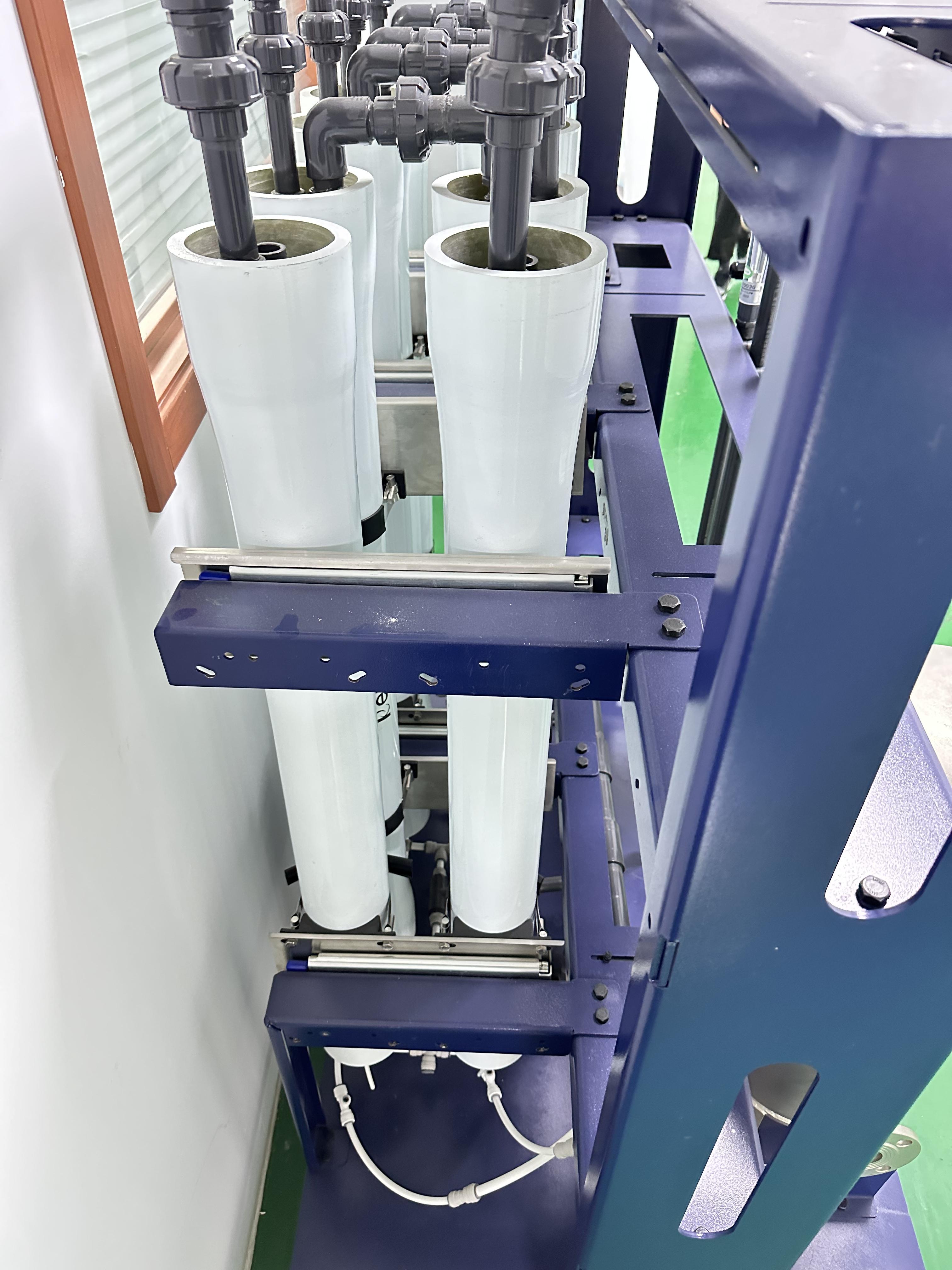| Sign In | Join Free | My chinacomputerparts.com |
|
| Sign In | Join Free | My chinacomputerparts.com |
|
| Categories | Membrane Bioreactor |
|---|---|
| Brand Name: | DUBHE |
| Model Number: | LP-8040-365FR |
| Certification: | ISO |
| Place of Origin: | CHINA |
| Feed Spacer Thickness(mil): | 34 |
| Effective membrane area(m2): | 33.9 |
| Stable Rejection Rate%: | 99.3 |
| Permeate Flow Rate(m3/d): | 35.9 |
| Minimum Rejection Rate%: | 99 |
| Application: | Commercial Water Purifiers |
| Usage: | Industrial, Municipal Wastewater |
| Company Info. |
| SHANGHAI DUBHE ENVIRONMENTAL PROTECTION&TECHNOLOGY CO.,LTD |
| Verified Supplier |
| View Contact Details |
| Product List |
To ensure accurate membrane product selection and performance prediction, customers should conduct at least one comprehensive chemical analysis of the feed water. Ideally, multiple analyses should be performed over an extended period or during potential abrupt changes in water quality. Historical trends in membrane system performance parameters are crucial, particularly for surface water sources, which may exhibit seasonal variations due to spring runoff or lake/pond turnover events. Frequent changes, such as heavy rainfall or even wind—which can stir up sediments in lakes or ponds—affect surface water composition and lead to fluctuations in feed turbidity. Generally, the more existing and historical data analyzed, the better the overall system design.
For example:
Surface water may contain suspended solids, organic matter, and various microorganisms;
Well water might include scaling substances such as hardness and silica;
Municipal water sourced from surface supplies could contain residual chemicals from treatment processes, including aluminum and iron, which may deposit on membranes in the form of hydroxides or silicates;
Recycled industrial wastewater may introduce various contaminants, scaling components, and membrane-damaging compounds such as oils, surfactants, and defoamers.

Membrane type | Membrane Model | Stable Salt Rejection% | Minimum Salt Rejection% | Average Water ProductionGDP(M3/d) | Membrane area ft2(m2) | Feed Spacer (mil) | Test condition | ||
Test Pressure psi(bar) | Test Solution Concentration nacl(ppm) | Recovery Rate% | |||||||
Ultra-Low Pressure Reverse Osmosis | ECO1-8040 | 99.0 | 98.5 | 10500(39.7) | 400(37.2) | 28 | 100(6.9) | 500 | 15 |
ECO1-4040 | 99.0 | 98.5 | 2600(9.8) | 93(8.6) | 28 | ||||
ECO2-8040 | 99.0 | 98.5 | 11000(41.6) | 440(41.0) | 28 | ||||
ECO2-4040 | 99.0 | 98.5 | 2800(10.5) | 103(9.6) | 28 | ||||
Ultra-Low Pressure Reverse Osmosis | LPO1-8040 | 99.3 | 99.0 | 11000(41.6) | 400(37.2) | 32 | 150(10.3) | 1500 | 15 |
LPO2-8040 | 99.3 | 99.0 | 11500(43.5) | 420(39.0) | 30 | ||||
LPO3-8040 | 99.3 | 99.0 | 12000(45.4) | 440(41.0) | 28 | ||||
LPO1-4040 | 99.3 | 99.0 | 2500(9.5) | 93(8.6) | 28 | ||||
LPO2-4040 | 99.3 | 99.0 | 2600(9.8) | 103(9.6) | 28 | ||||
LPO1-8040HR | 99.5 | 99.3 | 10000(37.8) | 400(37.2) | 32 | ||||
LPO2-8040HR | 99.5 | 99.3 | 10500(39.7) | 420(39.0) | 30 | ||||
LPO3-8040HR | 99.5 | 99.3 | 11000(41.6) | 440(41.0) | 28 | ||||
Low-Pressure (Brackish Water) Reverse Osmosis Membrane | PRO1-8040 | 99.5 | 99.3 | 10500(39.7) | 400(37.2) | 32 | 225(15.5) | 2000 | 15 |
PRO2-8040 | 99.5 | 99.3 | 11000(41.6) | 420(39.0) | 30 | ||||
PRO3-8040 | 99.5 | 99.3 | 11500(43.5) | 440(41.0) | 28 | ||||
PRO1-4040 | 99.5 | 99.3 | 2500(9.5) | 93(8.6) | 28 | ||||
PRO2-4040 | 99.5 | 99.3 | 2600(9.8) | 103(9.6) | 28 | ||||
Low-Pressure (Brackish Water) High-Rejection Reverse Osmosis
Membrane | PRO1-8040HR | 99.7 | 99.5 | 9500(36.0) | 400(37.2) | 32 | |||
PRO2-8040HR | 99.7 | 99.5 | 10000(37.8) | 420(39.0) | 30 | ||||
PRO3-8040HR | 99.7 | 99.5 | 10500(39.7) | 440(41.0) | 28 | ||||
PRO1-4040HR | 99.7 | 99.5 | 2000(7.6) | 93(8.6) | 28 | ||||
PRO2-4040HR | 99.7 | 99.5 | 2100(8.1) | 103(9.6) | 28 | ||||
Notes:
a. The maximum temperature for continuous operation at pH above 10
is 95 °F (35 °C).
b. Under certain conditions, free chlorine and other oxidizing
agents may cause premature membrane failure. Since damage from
oxidation is not covered under warranty, it is recommended that
customers remove residual chlorine through pretreatment prior to
membrane contact.


|